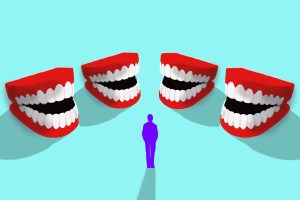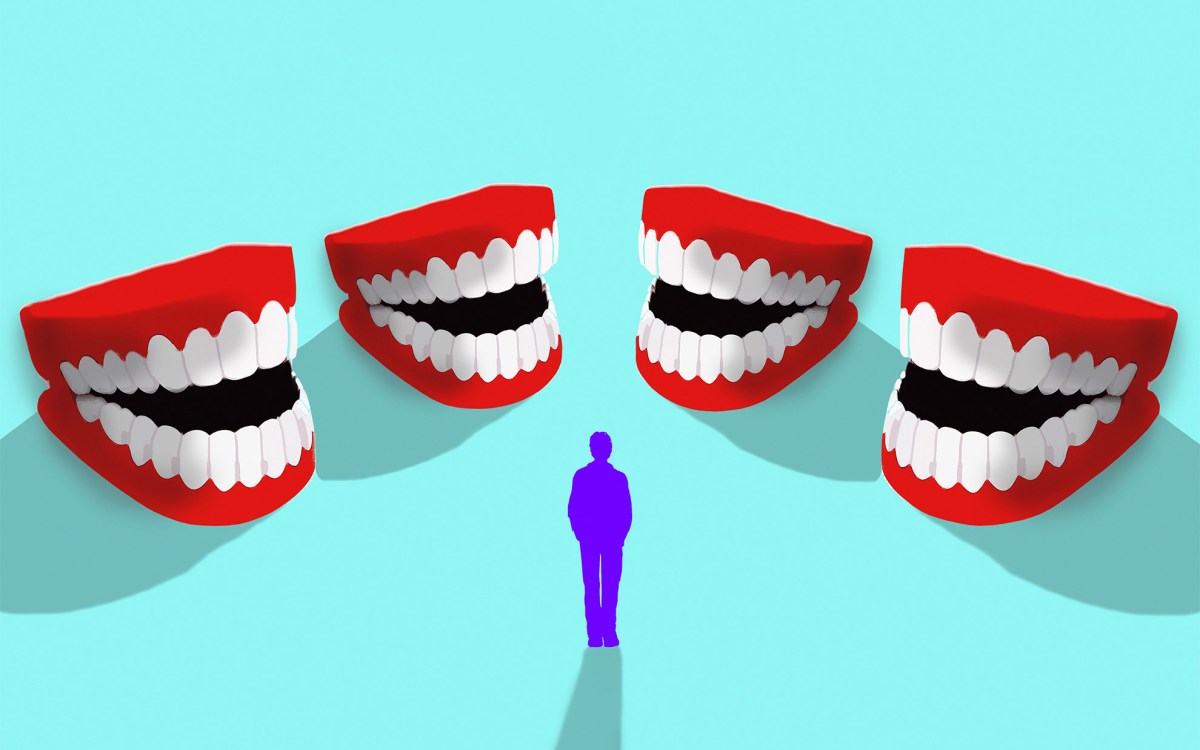Upcoming Supreme Court cases examined
What’s up this year at the U.S. Supreme Court?
Two experts were on hand at Harvard Law School (HLS) last week (Oct. 11) to answer that question. They offered insights into some future cases as well as speculations about what the court might look like after the national elections of 2008.
Lecturer Thomas Goldstein co-teaches a course at HLS on Supreme Court litigation and has argued 17 cases before the high court. Patricia Millett J.D. ’88, a former assistant to the solicitor general in the Office of the Solicitor General at the U.S. Department of Justice, in Washington, D.C., has argued 25 Supreme Court cases.
Together they head the Supreme Court practice at the firm Akin Gump Strauss Hauer & Feld LLP.
To gain a perspective on what lies ahead, the pair reviewed the court’s recent course.
Last term’s major cases treating social issues such as race, religion, and campaign finance, Goldstein said, were consistently won by the justices on the political right, signaling that the court is headed in a firmly conservative direction.
“The court, with the departure of [Justice Sandra Day] O’Connor, has become demonstrably, significantly more conservative … with a majority on the court committed to correcting what it views as fairly fundamental errors of law,” Goldstein said.
When it comes to Roe v. Wade, the landmark 1973 Supreme Court ruling that eliminated state and federal abortion restrictions, Millett and Goldstein agreed that, while Roe is unlikely to be overturned, the court is signaling its willingness to consider language that could tighten state controls on abortion.
“The functional value of Roe, which was already diminished, will continue to be diminished significantly more in the coming years,” Goldstein said.
Millett agreed, saying that the court won’t ever have to go as far as officially overruling Roe v. Wade, since it can considerably limit its effect incrementally.
The public is not interested in the day-to-day dealings of the court, Millett observed. Instead, she said, it “is looking for the headline that says Roe v. Wade is overturned.” While avoiding that particular headline, she suggested, the court can still chip away at the ruling in a sort of war of attrition. “Why take on the headache [resulting from overturning Roe] when you can get where you want to go … in little pieces and baby steps?”
Two important upcoming cases that Millett and Goldstein discussed are a suit filed by a detainee and relatives and friends of another detainee held at the U.S.-run Guantanamo Bay detention facility and a voter identification case based in Indiana.
The detainee case addresses the rights of non-citizen detainees and specifically examines whether Congress had the right to remove a federal habeas corpus right, which ensures access to a speedy trial, and replace it with a system of limited review in the D.C. Circuit Court.
Goldstein guessed that the detainees would win a portion of the case.
The voter identification case, Crawford v. Marion County Election Board, challenges an Indiana state rule that requires that voters produce a state- or federally issued photo ID when casting a ballot in person. The underlying concern of those filing the case, said Goldstein, is that such a requirement may disproportionately stop minorities — who are more likely to be Democrats — from voting, potentially affecting the outcome of elections.
Goldstein said in such cases the Supreme Court typically defers to the states regarding the design of their electoral systems. He called the case a pre-emptive attempt at resolving voter disputes ahead of the 2008 presidential elections.
“They don’t want a reprise of Bush versus Gore,” he said.
In looking to the future, Goldstein predicted Justices Ruth Bader Ginsberg, John Paul Stevens, and David H. Souter would likely step down during the next administration if a Democrat is elected president. The change wouldn’t mean a dramatic shift in the court’s ideology, he said, as they would most likely be replaced with left-leaning justices. But if a Republican lands in the White House, the departure of these justices could mean the nomination of far more conservative candidates.
“The court can stay the same or get a little bit more conservative [under a Democratic president], said Goldstein, or [under a Republican president] it can get radically more conservative.”
He didn’t anticipate any departures in the near future by more right-leaning members of the court. “The chief justice, Justice Alito, and Justice Thomas are going to be on the Supreme Court when you are thinking about retiring,” he said to a chorus of laughs. “That one was not a joke. … Twenty-five years from now there’s every reason to believe … that they will still be on the Supreme Court going into their late 70s.”
Certain the next president will be under pressure to nominate a woman, Goldstein named Harvard Law School’s Dean Elena Kagan a top contender for a possible spot on the court if a Democrat is elected president. Other potential nominees on his list include Sonia Sotamayor, judge of the U.S. Court of Appeals for the 2nd Circuit, and Diane Wood, judge of the U.S. Court of Appeals for the 7th Circuit.
Millett had some tips regarding the process of arguing a case before the nine judges. In tight cases that might hinge on the decision of one particular judge, Millett said you have to be careful and walk a fine line.
“You have to get at the one you want in a way that doesn’t alienate the other four that also you want to get,” she said. “You have to talk to everyone at once. That is the real art of this process.”




